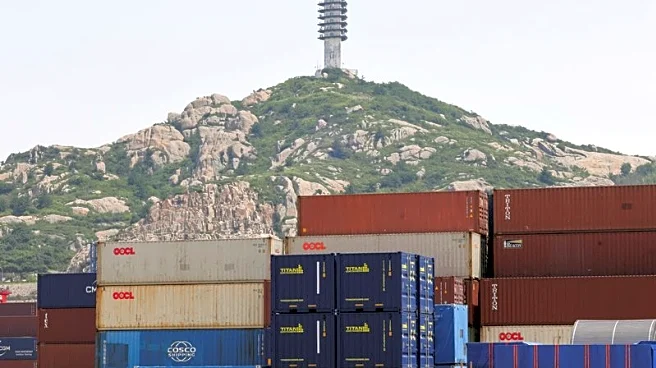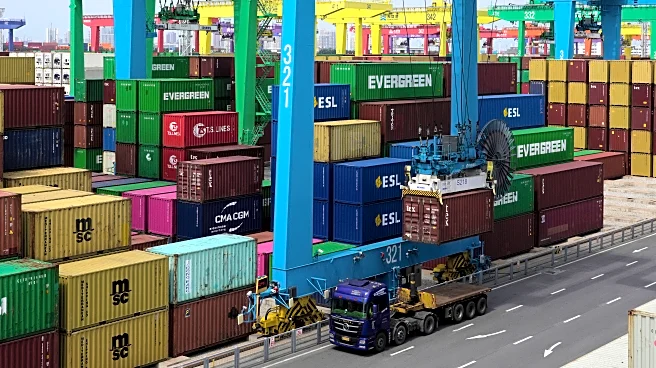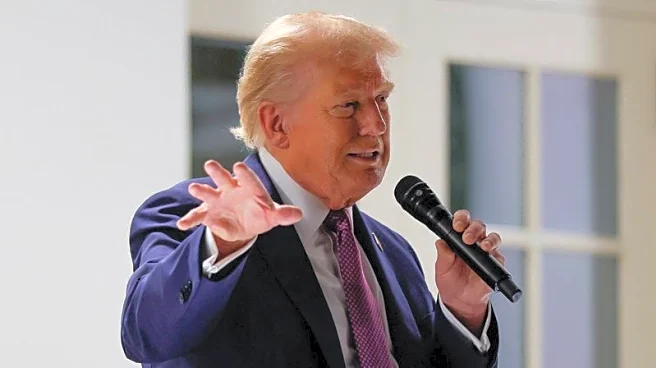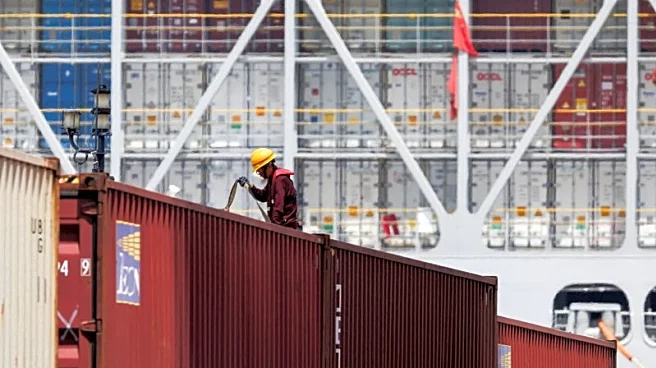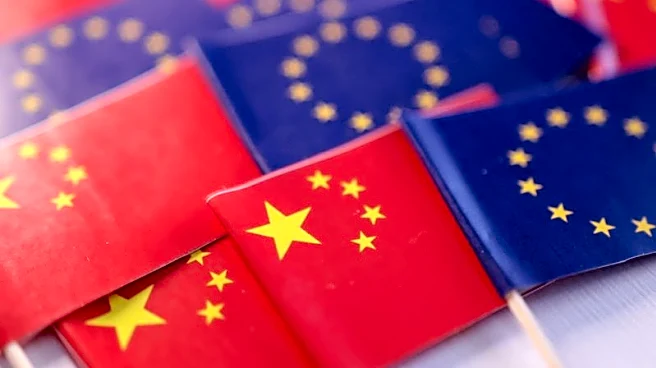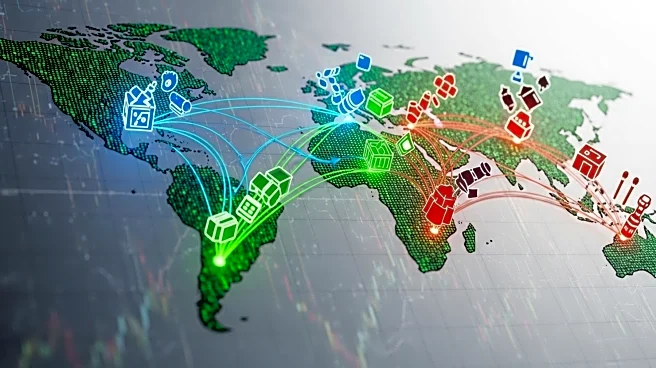What is the story about?
What's Happening?
China's export growth in August has slowed to its lowest level since February, with a 4.4% increase in U.S. dollar terms, falling short of the 5.0% rise anticipated by economists. This deceleration is partly due to a high base effect from the previous year when exports surged at a record pace. Imports also grew by only 1.3%, missing expectations for a 3% increase, as domestic demand remains weak amid a real estate slump and job insecurity. The slowdown in export growth comes as China increasingly turns to alternative markets in Southeast Asia, the European Union, Africa, and Latin America, amid ongoing trade tensions with the United States. Despite these efforts, the U.S. remains China's largest single-country trading partner, absorbing $283 billion of Chinese goods this year as of August.
Why It's Important?
The slowdown in China's export growth has significant implications for U.S.-China trade relations and the global economy. The U.S. remains a critical market for Chinese exports, and any reduction in trade could impact both economies. The ongoing trade tensions, marked by high tariffs, continue to strain bilateral relations, with recent talks yielding little progress. The U.S. has imposed a 40% tariff on transshipped goods, which could further challenge Chinese exporters. This situation underscores the fragility of global supply chains and the potential for economic disruptions if trade tensions persist. U.S. businesses relying on Chinese imports may face increased costs, potentially affecting consumer prices and economic growth.
What's Next?
China and the U.S. have agreed to extend their tariff truce by another 90 days, maintaining existing tariffs. However, the lack of progress in recent trade talks suggests that tensions may continue. Chinese exporters may face increased scrutiny from the U.S. on transshipments, potentially leading to further trade barriers. Both countries are likely to continue seeking alternative markets and strategies to mitigate the impact of tariffs. The upcoming release of China's inflation data, including the consumer price index and producer price index, will be closely watched for indications of economic trends and the effectiveness of Beijing's policies aimed at stabilizing prices.
Beyond the Headlines
The ongoing trade tensions between China and the U.S. highlight broader geopolitical shifts and the challenges of navigating complex international trade relationships. The reliance on alternative markets by China reflects a strategic pivot that could reshape global trade patterns. Additionally, the focus on transshipments and tariff evasion tactics underscores the need for robust trade compliance and enforcement mechanisms. These developments may prompt businesses to reassess their supply chain strategies and explore diversification to mitigate risks associated with geopolitical uncertainties.
AI Generated Content
Do you find this article useful?







